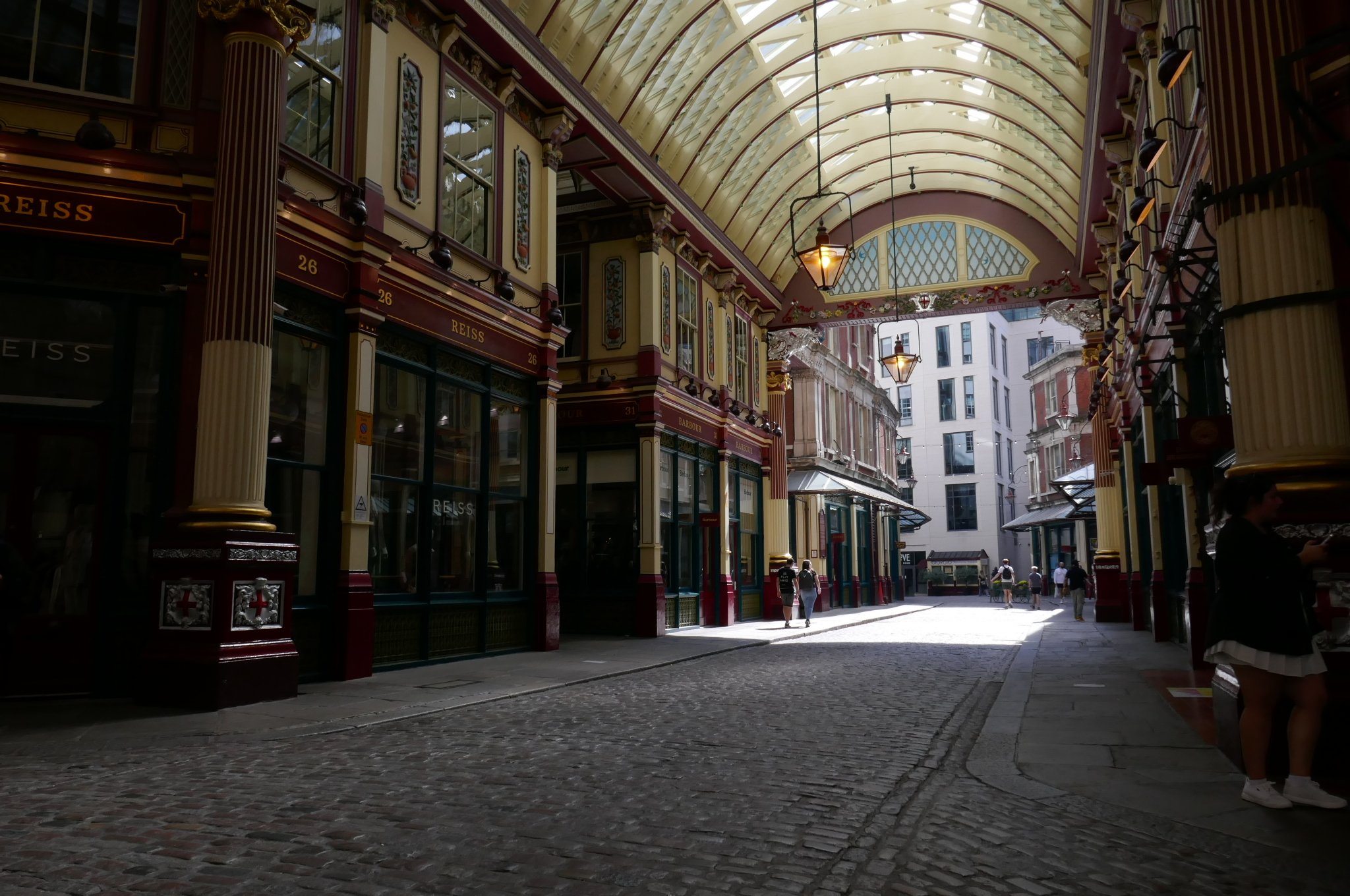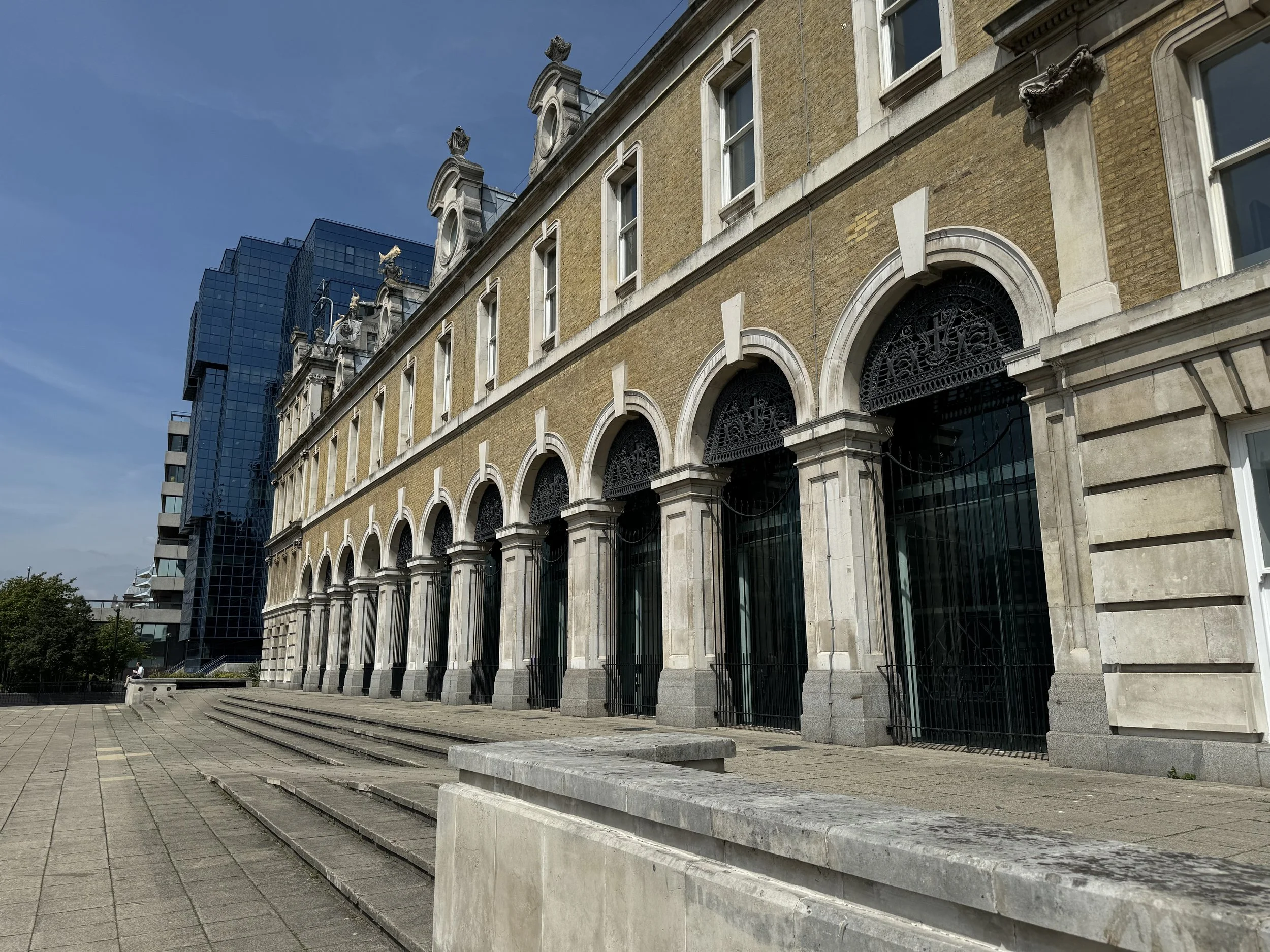Exploring the Historic Markets of the City of London
Markets have been integral to the City of London's commercial life for centuries. Let’s take a look…
Leadenhall Market
Leadenhall Market
Leadenhall Market, one of London's oldest markets, dates back to the 14th century. It originally served as a market for meat, poultry, and game. The market's current design, built by Sir Horace Jones in 1881, features stunning Victorian architecture in wrought iron and glass. The cobbled floors, silver dragons and old poultry hooks create an enchanting atmosphere that reflects its storied past. A popular filming location, Leadenhall Market is the entrance to Diagon Alley in the Harry Potter movies.
Did you know?
One of the most beloved stories from Leadenhall Market is that of Old Tom, a gander who lived in the market in the early 19th century. Old Tom became a market mascot, known for wandering around the stalls and being fed by traders. When he died in 1835, he was given a grand burial within the market, as well as an obituary in The Times, and a plaque still commemorates his life here.
Smithfield Market
Smithfield Market
Smithfield has been a central part of London’s meat trade since the 12th century. It was the site of the livestock market until 1852., and then Smithfield Market opened as a meat market in the 1860s. The current buildings, designed by Sir Horace Jones, showcase Victorian architecture with grand archways and intricate ironwork. The market's distinctive green, purple and blue colour scheme adds to its visual appeal. Smithfield Market remains a working meat market, bustling with activity in the early hours as traders buy and sell meat and poultry. While it’s primarily a wholesale market catering to the restaurant trade, members of the public are also welcome to shop there.
Did you know?
During World War II, a disused railway tunnel under Smithfield Market served as an air raid shelter.
Billingsgate Fish Market
Old Billingsgate
Billingsgate Market was once the world's largest fish market, with origins going back to the 16th century. Originally located on the north bank of the River Thames, the market moved to Poplar, near Canary Wharf, in 1982. The 19th century Billingsgate building, designed by City architect Horace Jones, featured large windows and a grand clock tower, epitomising Victorian market architecture. It’s no longer used as a market but you can still admire the fish-themed decoration outside.
Did you know?
Dutch fishermen helped to feed people in London after the Great Fire. As a result, they were granted the exclusive rights to sell eels at Billingsgate.
FAQs
Are these markets open to the public?
Leadenhall Market and Smithfield Market, are still operating and are accessible to the public. Old Billingsgate no longer exists as a functioning market.
What are the best times to visit these markets?
The best times to visit vary by market. For example, Leadenhall Market is lively during weekdays, especially around lunchtime. Smithfield Market is busiest in the early hours of the morning. It’s best to check specific market schedules for detailed visiting times.
Are there any special events or festivals held at these markets?
Yes, Leadenhall Market often holds special events – see the website or their social media for details. And if you’re in the City for the holidays, don’t miss the Smithfield Market meat auction on Christmas Eve.
Are these markets accessible for people with disabilities?
Yes, Leadenhall and Smithfield are accessible. It’s advisable to check individual market websites or contact the market management for detailed accessibility information.
Discover the Square Mile’s markets on a walking tour
Join me on a walking tour of the City of London to discover its historic markets and more. Take a look at the walks currently on offer, or get in touch to request a private tour.



